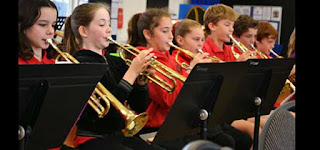The media arts focus on representing the world and telling stories
through various modes of communications technologies, such as film, video,
television, newspapers, magazines, radio, podcasts, video games, the internet and
mobile media (Dinham, 2013, p. 227).
Communication technologies have evolved enormously over the past 90
years, particularly in relation to broadcast media. Wireless to
web by the National Film and Sound Archive not only provides a
useful overview of this evolution, it also serves as a great media resource for
teachers! Throughout this evolution, media education has focussed on ensuring
children become intelligent consumers of mass media. However to be successful
in contemporary society, it is now recognised that students also need to
develop skills as media creators (Dinham, 2013, p. 227 - 228).
 |
| My children on their way to developing their digital literacy! |
Observing how children interact with various communications technologies
in their everyday lives, it is understandable that some teachers may assume
that all students are 'digital natives' (Dezuanni & Raphael, 2012, p. 157).
However it is important for teachers to realise that the extent of their
students’ digital literacy may vary due to gender, ethnicity and socio-economic
status (Dinham, 2013, p. 230).
Understandably, resourcing media arts can be costly. Fortunately there
are a number of open software products available. For example:
- Stop
Motion Central - Below is an example of it in action:
Here are some other great media resources for teachers and students:
Finally, a really important aspect of teaching media arts is ensuring
internet safety and promoting digital citizenship. This encompasses the concept
of students learning about the nature of gathering, interacting and behaving
within a networked environment. The netalert teachers guide, whilst published in
2004, still provides relevant guidelines for teachers. For the most up to date
information check out Digizen.
References:
Dezuanni, M. & Raphael, J. (2012). Media arts and learning in the digital world. In C. Sinclair, N. Jeannert & J. O'Toole (Eds), Education in the arts. Melbourne, VIC: Oxford University Press.
Dinham, J. (2013). Delivering authentic arts education. South Melbourne, VIC: Cengage Learning.






























